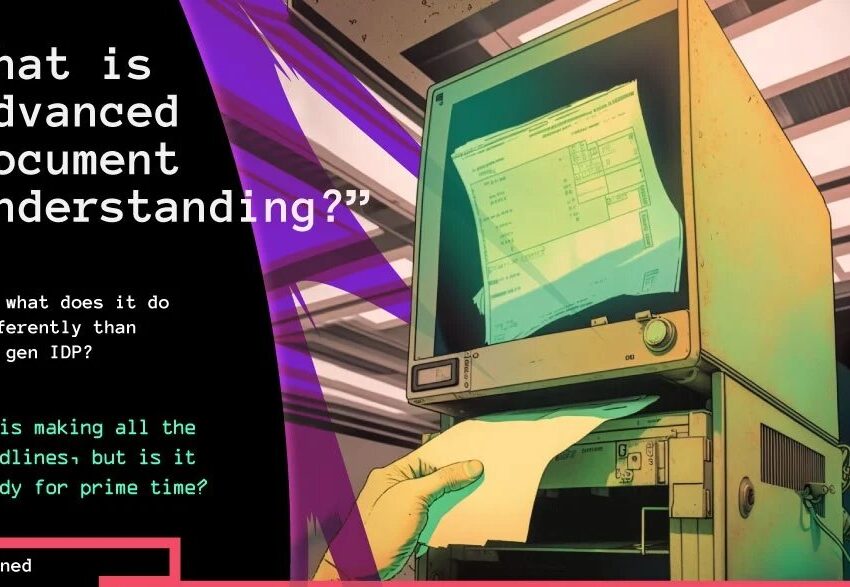Intelligent document processing (IDP) represents an AI-fueled breakthrough gaining substantial momentum across a broad range of industries. In an era of increasing digitalization, businesses are embracing IDP as a revolutionary tool for the automation of vast amounts of unstructured data processing.
What is Intelligent Document Processing?
IDP leverages a combination of machine learning, deep learning, and expert systems to meticulously analyze, categorize, and extract meaningful data from unstructured documents, such as invoices and contracts. Today, we unravel the components of artificial intelligence (AI) that empower IDP and demonstrate the transformative potential of these technologies in business scenarios, with real estate predictive algorithms as our focal example.
Our journey begins by unraveling the concept of advanced document understanding. A natural evolution from first-generation IDP, advanced document understanding represents the next frontier in AI application. It employs the power of AI to learn from past experiences and to comprehend and respond to a variety of prompts, ranging from written instructions to complex mathematical problems and image analysis.
Examining AI Models
The realm of AI is brimming with diverse models: dynamic content suggestions on social media platforms, self-driving vehicles like Autox and Motional, and Generative AI, such as ChatGPT. Each of these models reflects the breadth and depth of AI’s influence.
Three central categories of AI come together to create advanced document understanding: machine learning, deep learning, and expert systems. Machine learning enables systems to learn from data and experiences without explicit programming. Deep learning deals with complex patterns and datasets, and expert systems mimic human-like decision-making. Each category plays a crucial role in forming a holistic AI ecosystem. The intersection of these technologies offers a transformative solution, as exemplified by the Zillow Zestimate tool.
The world anticipates a surge in AI expenditure, set to exceed $500 billion in 2023. Multiple AI applications fall under this umbrella, including generative AI, predictive analytics, natural language processing, and computer vision. These capabilities drive pivotal business operations such as service optimization, new AI product development, and customer analytics.
To navigate the AI landscape effectively, it is essential to understand several key terms: machine learning, application programming interfaces, data extraction, JavaScript object notation, and optical character recognition. Understanding these terms elucidates AI’s enormous potential in enhancing efficiency, speed, quality, and talent management in business and government operations.
AI in Business Operations
To effectively integrate AI into operations, businesses should define their needs, set near-term goals, evaluate their capabilities, prepare their data, and start small. The efficacy of advanced document understanding is best exemplified by Lazarus AI’s RikAI platform. This next-generation IDP tool outperforms its peers with its extraordinary performance, simple integration, and ability to process data from any document, irrespective of type, format, or language.
RikAI proves its superiority over other platforms, addressing many of the common customer requirements that challenge previous-generation IDP tools, including processing handwriting, eliminating the need for template building, and avoiding accuracy loss when new document layouts are introduced. Moreover, it offers impressive price-performance for signatures and checkboxes, interpreting typed text with 99.9% accuracy and handwriting with 92% accuracy.
Conclusion
The emergence of advanced document understanding represents a giant leap in the evolution of AI. As businesses and governments integrate AI into daily operations, it becomes imperative to harness the potential of next-gen IDP for maximizing value and empowering business transformations. Advanced document understanding, as embodied by RikAI, offers an exciting glimpse into the future of AI-enabled business operations.


